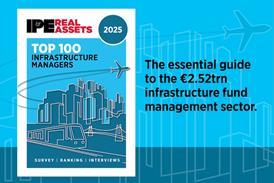New capital targeting commercial real estate globally grew to reach a new record of $443 bn (€392 bn) in 2015, according to a report out on Thursday from Cushman & Wakefield.
New capital targeting commercial real estate globally grew to reach a new record of $443 bn (€392 bn) in 2015, according to a report out on Thursday from Cushman & Wakefield.
The 12th edition of the Great Wall of Money report – launched at MIPIM at Cushman & Wakefield’s stand (R7 G9) – tracks the amount of newly-raised capital targeting real estate at a global level. The report shows that the flow of capital is unrestricted as investors seek opportunities in all markets across the world.
However, despite investment activity approaching record levels in many markets, the pace of growth in capital raising is slowing, according to the report. Indeed, 2015’s 3% increase is much weaker than the 21% growth recorded in 2014 and reflects how active investors have been in putting their capital to work in an increasingly buoyant market.
Growth in available capital was recorded across the three regions with Asia Pacific leading the charge with an 8% increase to $131 bn, bolstered by the closing of a number of funds during the course of 2015. Despite this increase, however, the region attracts the least capital. Both EMEA and the Americas saw capital expand by less than 2%. Across EMEA, there is $143 bn of new capital, with the Americas still attracting the greatest amount at $169 bn.
In a step change from last year, actual raised capital has started to decline – albeit by less than 1% from $408 bn to $407 bn. This indicates that funds that have raised are focused more on deploying their capital. This is especially true for EMEA, where raised capital fell 4% over the year to $131 bn. In contrast, Asia Pacific saw a modest rise of 3%, and the Americas was up less than 1%.
Carlo Barel di Sant’Albano, CEO of Cushman & Wakefield’s global capital markets & investor services business, commented: 'As global equity markets face increased uncertainty, factors such as quantitative easing and lower-for-longer interest rates will sustain the relative attractiveness of commercial real estate, helping to bolster the continued flow of capital into real estate and related funds.
'With available capital at record levels, effective deployment becomes a critical concern for investors. This will benefit the large and liquid markets of the US, China, UK, Japan and Germany. We also expect the strong momentum of cross border flows to continue as investors seek to diversify across markets.
'As opinion on the future of the markets becomes increasingly divided, we anticipate there will be a further transformation in the way in which capital is allocated. Investors will focus on de-risking decisions and will favour preferred managers with strong track records. In addition, given the significant capital allocated to real estate, investors will evaluate joint venture and platform deals as a route to deploy capital more easily in the market.'










